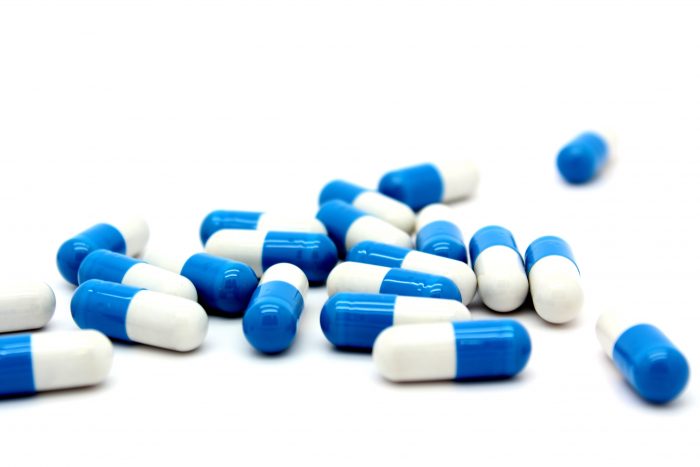As optometrists we are very familiar with the uses and benefits of topical steroids in a whole variety of situations in order to reduce inflammation. Systemically they are also used in such a wide range conditions, delivered by a variety of different modes. We also realise that the term ‘double-edged’ sword can be applied to very few drug classes as appropriately as it can be in the case of steroids.
Occasionally in clinic you see a patient scenario that stays with you in that you witness a patient who has suffered significant visual in a situation which may have been preventable. The best thing we can do in such cases as clinicians is to consider whether there is anything we can do to reduce the likelihood of the same thing occurring to another patient.
One such case was a young patient in their early twenties I saw in the glaucoma clinic several years ago, who presented to the hospital eye clinic with a level of bilateral glaucoma that wasn’t far off equating to total blindness. In the relatively rare occasions when we see a patient with such advanced glaucoma, we are treating them as best we can, and almost willing for their last remaining ganglion cell axons of the optic nerve to cling on and survive for as long as the patient is requiring them for. There is however a terrible sense of inevitability when the patient has glaucomatous damage of this severity at such a young age.
How had this situation come about? Unfortunately throughout their teenage years this patient had been using nasal steroid inhalers, possibly for hay fever or rhinitis. As a ‘steroid responder’ the IOP was quietly raised in the background and the damage being done without this patient realising. Sadly they only went to their optometrist concerned about their vision when the glaucoma had reached a stage of being symptomatic, which is normally when moderate to advanced visual field loss has been sustained.
This patient scenario is one that always sticks in my head as a situation that was so unfortunate yet so avoidable.
Cortico-steroids, which are so widely used to treat a range of ocular and systemic inflammatory conditions have a range of potential side-effects, and raised IOP we know is one of those. The exact mechanism for this is not completely understood, however it is thought that in those patients who do respond, the steroid is bringing about changes in the cellular matrix of the trabecular meshwork increasing the resistance to aqueous outflow. Often the pressure can be significantly raised – 40mmHg and above. When topical ocular steroids are being used, the risks of the worst case scenario described above are probably small, as the patient is being treated and monitored by an ophthalmic professional who will check for an IOP response, and treat accordingly. In these cases the patient usually won’t have a raised IOP for long enough to develop glaucoma. The course of drops may not be a long-term treatment – most commonly for a few weeks in the case of anterior uveitis or post-operatively following cataract surgery for example. For patients on other modalities of steroid for systemic conditions, they might be on longer-term treatment, and equating their treatment to a risk of damage to their eyesight may not be on their radar.
Just looking at some of the literature on this topic, I found a recent detailed review in an article in the Journal of Current Glaucoma Practice from 2017 by Phulke et al, which is really useful. This is the link to the full article – https://www.ncbi.nlm.nih.gov/pmc/articles/PMC5577123/
There were a few key points I took from this article that I would like to highlight. The general risk of responding to steroids with a raised IOP is around 40%, however there are several factors that can put this risk up or down. Topical steroids are higher risk of response than systemic, which as mentioned above perhaps isn’t quite as big a worry as these patients are generally under the care of an ophthalmic professional. The risk of steroid response rises significantly for those patients with POAG or with a family history of POAG. Perhaps this adds to the theory that these patient are are prone to changes within their trabecular meshwork which can illicit a rise in IOP. Interestingly with respect to age, younger patients, especially children are at greater risk of responding, with steroid induced glaucoma being responsible for 25% of all acquired childhood glaucoma.
Treatment when detected is fairly simple – if there is an option to stop steroid treatment or use a less potent drug option, this will reduce the IOP within a few weeks of cessation. Where the steroid must be continued for any reason, topical IOP lowering medications are effective at negating the effects of the steroid, and can be used as cover until the steroid can be stopped.
The key here is really one of awareness, both on the part of the patient and practitioner. For optometrists I think having a simple policy of checking IOP on all patients on steroid is a fairly simple and practicable one. The test is quick and easy test and can be applied to any patient who is currently using steroids from their medical history. With children being at higher risk, again this should be fairly straightforward given the different tests available to us nowadays to measure IOP. A fairly uninvasive device such as the iCare can be really good in these cases.
The majority of patients won’t be steroid responders and will be absolutely safe using them, however from the fairly sobering case described above it seems clear that applying this simple test to our patients receiving steroid treatment, may just be vision saving.
Thanks again for reading – again please feel free to comment or email any feedback on this article!
Stan


